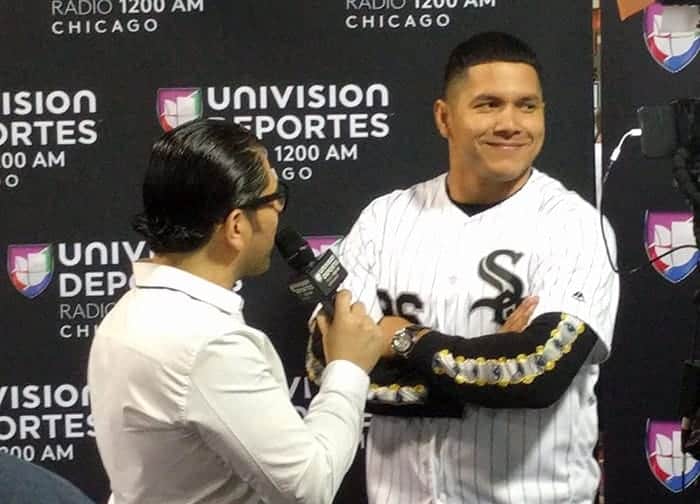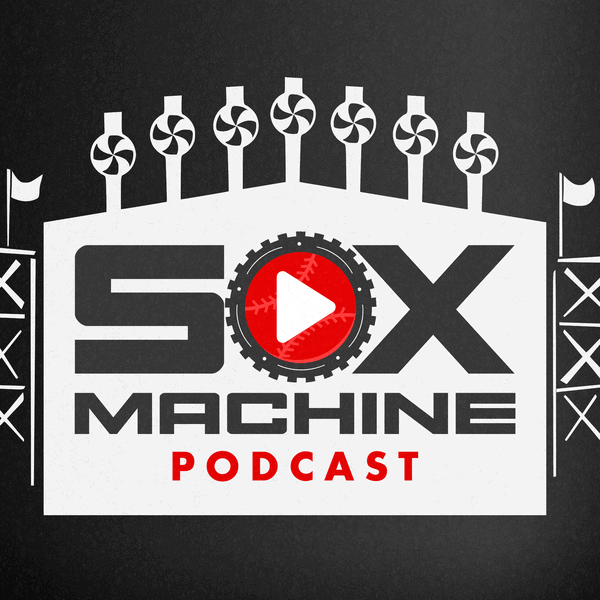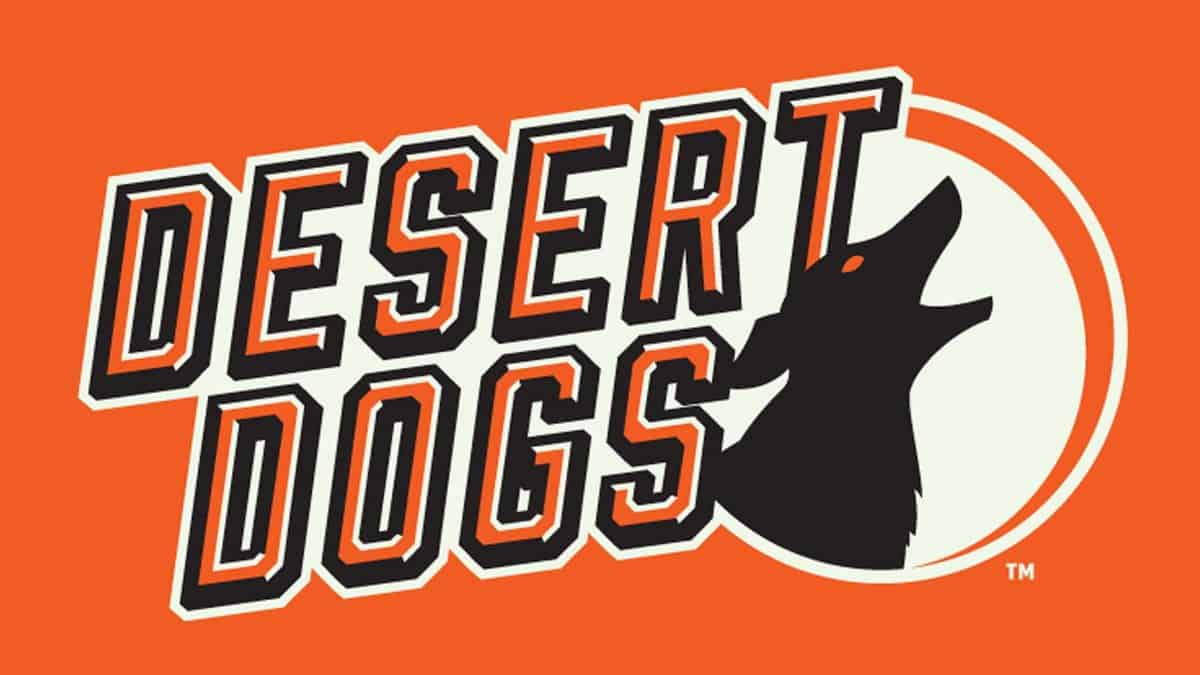Happy Opening Day. After a late addition of Matt Davidson to the first half of the list -- he's No. 21, pushing Jose Rondon out of the top 40 -- we'll now resume with the original plan of detailing the 20 most essential White Sox of 2018.
(If you missed the first part, there I offer a general sense of what "essential" is all about.)
- No. 20: Ryan Cordell
- No. 19: Adam Engel
Basically, the hope is that the one of these two guys can hack it in center field well enough to handle a fair chunk of starts over the next year or two, and then the Sox will go from there. Both players had the kind of springs you'd like to see considering their question marks -- contact for Engel, health for Cordell -- but they have to carry some of that into the season to avoid labels like "AAAA" or "fifth outfielder."
- No. 18: James Shields
- No. 17: Miguel Gonzalez
Here we have two veterans who are working on one-year contracts, and whose primary purpose is to consume innings and create a healthier workplace for the other young pitchers, be it through mentoring or sparing relievers by going six-plus innings at a time. I wouldn't count much for trade value in either case. Some people may have forgotten the player the White Sox got from the Rangers for a month of Gonzalez (Ti'Quan Forbes).
- No. 16: Carson Fulmer
This might be an awkward season for Fulmer, because he still looks like a pitcher who will struggle to repeat his delivery week to week, and maybe even inning to inning. This year may be spent coming to grips with a move to the bullpen.
- No. 15: Leury Garcia
- No. 14: Yolmer Sanchez
Here we have, at the very least, two capable switch-hitting utility guys. What makes them compelling is that both players spent sizable chunks of 2017 producing in an everyday role (Garcia in center, Sanchez at third base). They might have timed their hot streaks to tease, but it's in the Sox' interests to find out, because the rest of the league could be interested as well.
- No. 13: Alec Hansen
Chris Getz said Hansen is starting to throw again after missing most of the spring with forearm tightness, which means Hansen could spend April in Arizona to get a full sort of spring training. He had elbow problems at Oklahoma, so the Sox might have to exercise caution managing his forearm issues here. The good news is that he's ahead of the curve developmentally -- if he picked up where he left off in 2017, it'd be hard to keep him off the roster in September, which is remarkable considering his control issues with the Sooners. Basically, time is on everybody's side if the Sox need to slow-track him.
- No. 12: Welington Castillo
Castillo upgrades the White Sox' catching situation in several facets -- power, throwing, blocking, and maybe even framing if last year's improvements in the metrics prove more than a mirage. Young pitchers would appreciate the enhanced presence behind the plate if Castillo can deliver on last year's reports, and the White Sox front office would finally see a veteran acquisition pan out for once.
- No. 11: Nate Jones
Multiple surgeries have drastically limited Jones' availability in three of the last four seasons, and it's not like he's a bet to get healthier as he advances into his 30s. That said, he's a great reliever on an attractive contract when fully functional. A strong first half could start another major unloading of relievers, and Jones is the only one with the kind of Tommy Kahnle upside.
- No. 10: Carlos Rodon
It's easy to write off Rodon, and the White Sox probably should mentally account for him underwhelming over his next four seasons under team control given the injury events of the last year. He's not expected to return until June, which is the far end of the timetable given for his recovery from shoulder surgery. That said, it's not yet out of the question that Rodon can deliver on most of his original stock, and even a No. 3 starter would give a rebuilding White Sox rotation the depth it needs to succeed earlier than later.
- No. 9: Nicky Delmonico
Given that he was 41st on this list last year, one shouldn't saddle Delmonico with unrealistic expectations after what still qualifies as a surprise (.262/.373/.482 for the White Sox over 166 plate appearances). His track record says he's not a great bet to do that again, and he's not likely to supplement lackluster offense with scintillating defense.
That said, the well-built teams find ways to generate surprises from within (see the St. Louis Cardinals and their numerous random outfield success stories). While Delmonico may not be the guy that comes out of nowhere, the Sox will need the occasional Delmonico story to stick and provide average-or-better value to make this whole "sustainable winning" thing work. So, why not Delmonico?
- No. 8: Avisail Garcia
Garcia finally found a way to succeed with his unusual hitting profile, parlaying his aggressive approach and opposite-field power into a .330/.380/.506 line. If the lack of loud trade rumors is any indication, the league might think there are ways of preventing him from replicating that success.
It would behoove some teams (especially those with rangy first basemen) to defend the-right-handed Garcia differently. He hit 84 percent of his ground balls and short line drives to the left of second base, up from 76 percent in 2016. By our evaluation methods, this makes him worthy of shifting much more often than he was last season. Doing so may take Garcia’s numbers down a peg.
Our 2018 projection has him slipping to a .278 batting average and .763 OPS.
This, and not random variance, might be what takes a bite out of Garcia's .392 BABIP. Maybe he can top 20 homers for the first time in his career and offset some of those losses, but other teams may want to see it for themselves before giving the Sox a difference-making offer. That said, if Garcia can even come close to repeating his 2017, he's probably the best trade asset the Sox have ...
- No. 7: Jose Abreu
... because I don't see Abreu going anywhere, at least until Yoan Moncada loses the training wheels. Rick Hahn hasn't sounded especially anxious to sign Abreu to an extension, although maybe that's because the current market for first basemen only yielded a one-year contract for a guy coming off a 38-homer season. I think Abreu has more value than Logan Morrison, but not so much that the Sox need to jump the market two years early.
For the time being, continue enjoying Abreu as a White Sox mainstay.
- No. 6: Reynaldo Lopez
Between the brief back injury and the same curveball issues that plagued his former Washington teammate and Adam Eaton trade partner, I don't think we've seen the best from Lopez. I wouldn't take the curve's resurgence as a given, and he'll need that more reliable breaking ball to offset his fastball's tendency to lose steam in the middle innings, but a long rebuilding season should give him ample opportunity to address that issue.
- No. 5: Tim Anderson
Even if you set aside the personal tragedy that wrecked his 2017 -- and you shouldn't; this is just an exercise -- there was a real possibility that he'd have to spend the year confronting the dangers of his extreme aggression. The hope is that his September showing (.327/.345/.469, 9-for-9 on the basepaths, fewer misplays) is closer to the future. If he hits .280 and makes better use of his speed, he's a valuable part of this rebuild on a contract Hahn can easily accommodate into the far future. If he has another season around replacement level, the whole left side of the infield looks murky.
- No. 4: Eloy Jimenez
- No. 3: Michael Kopech
On multiple occasions over the last few months, Hahn has overcorrected in an attempt to downplay the hype from everybody's two favorite prospects. Here he is doing it to Bruce Levine:
"Look, if at the end of this year Jimenez has spent his entire season at Double-A and performed well or Kopech has done the same and hit all of their organizational goals, those are perfect tracks to have dominant big league careers. Certainly, if that occurs for either one of those players, we will not look back and be disappointed. You have heard me say maybe too often that the good players have a way of forcing the issue and getting to the big leagues faster. It is conceivable that they may force the issue on us. Timelines can change. If both spend the entire 2018 in the minor leagues, that is still a very solid path for them to be on."
I get what Hahn is trying to do here. For the players, he wants to give them a little breathing room in case they look human out of the gate, because intense start-to-start focus at the minor-league level can be unfair. For the front office, he's trying to ground expectations in case it becomes difficult to argue waiting for the Super Two deadline. But if Jimenez ends the year in Double-A and Kopech doesn't look worthy of a September call-up, that'd register as a disappointment, because it's a negative movement in their trajectory.
It'd be more correct to say it's not the end of the world, or that "development isn't linear," to use another Hahn trope. Regardless, I'd expect Kopech and Jimenez to have a couple of cool moments in the majors this season, setting themselves up to take their six-month lumps in 2019.
- No. 2: Lucas Giolito
If you want to get where Hahn is coming from, Giolito was subjected to that harsh spotlight in Charlotte, and he wasn't allowed to voice uncertainty about his progress without causing a panic. A year later, he has MLB success under his belt, and he's taken the White Sox' "stay tall" directive a step further by lowering his arm slot, which might give him more command over his breaking ball. Giolito says it wasn't a conscious decision. It just felt right, because things are feeling right for him.
“Did I go and say, ‘Oh I’m going to move my arm slot this amount on inches?’ No. I think I’ve kind of naturally gotten there. I feel like I’m doing a much better job of staying upright and strong with my upper body and my front side and that’s leading to…[we discuss how this physical demonstration is going to be conveyed on transcription]…instead of tilting [his torso to the left, prompting his right arm to move with it] and now my arm is higher, I’m upright and strong here, my front side is strong, so it’s staying in this [three-quarters] slot. It feels natural. It feels good to me. It might have something to do with the ball coming out a little better and the curveball working better. It just feels super comfortable.”
If Giolito's spring carries into the season -- regaining ticks of velocity, recovering the breaking ball, honing the slider and changeup -- there's a sturdy starting pitcher who just needs to show he can hold up over a full season's grind.
- No. 1: Yoan Moncada
Moncada's weaknesses -- chiefly his swing-and-miss tendency and weaker right-handed swing -- may tether his offense to "average" in 2018 despite moments of greatness. He'll probably have some ugly weeks that makes one wonder if the wheels have flown off of his approach. He's just so absurdly talented in other regards that, all in all, he'll still be the most exciting player this rebuild has to offer after the next 162 games.






